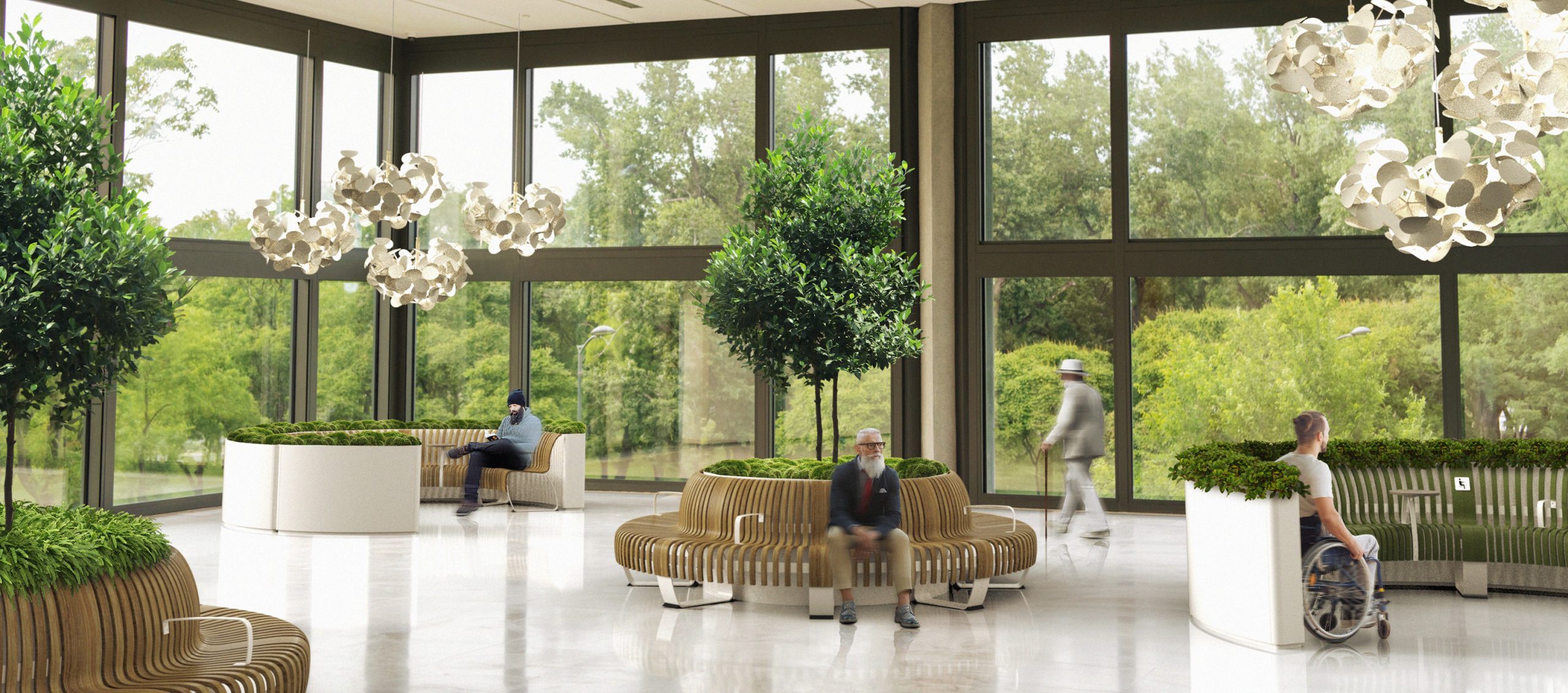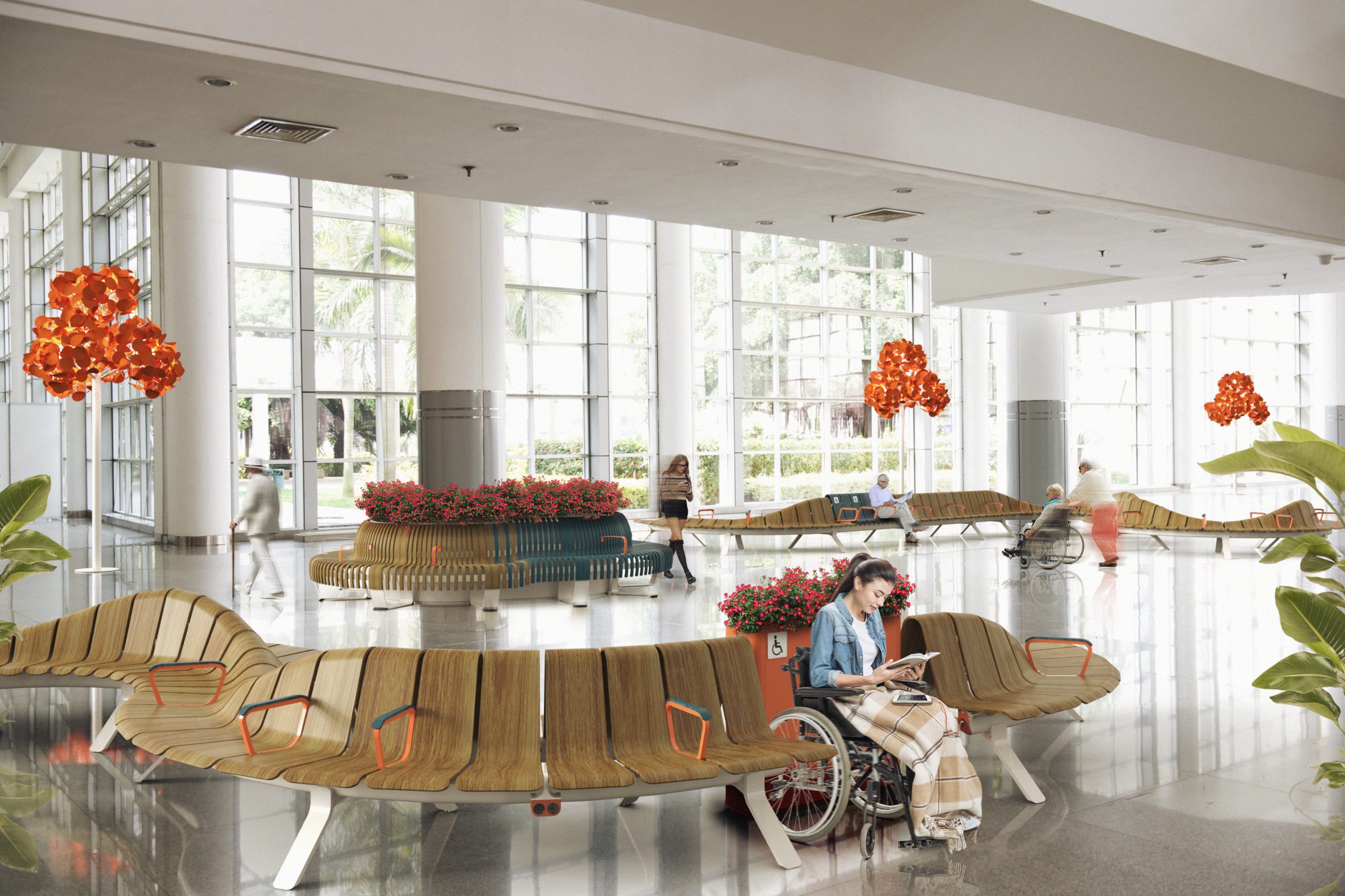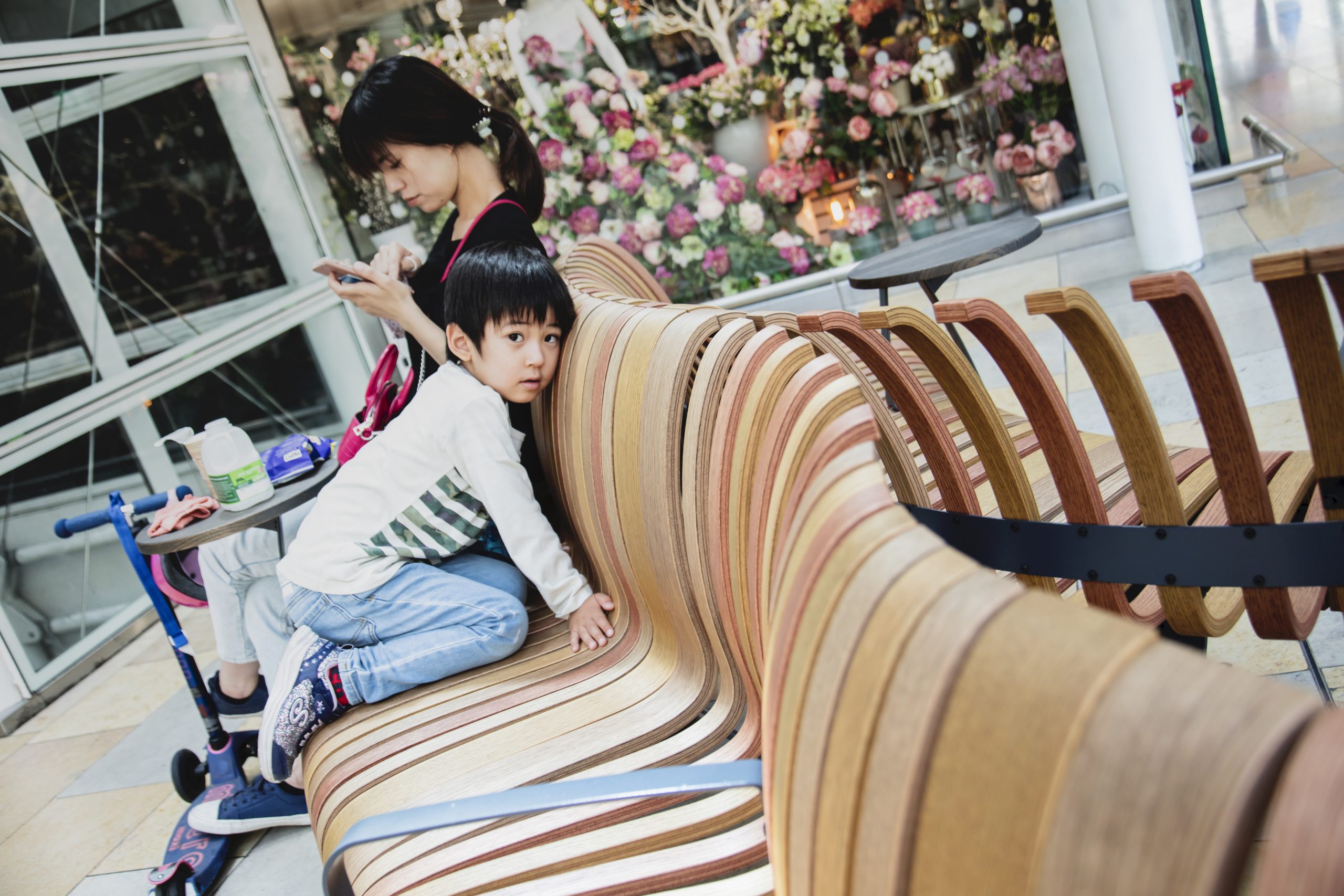Inclusive design – public furniture for public good
What if you spend your entire life trying open right-handed doors as a lefty? What if you always have to bend your head down to pass through doorways? What if your wheelchair never really fits in with the rest of the seating? When navigating a public space, the list of frustrations can be very long for anyone that differs slightly from society’s image of the average person. For decades, public spaces have been designed to cater to an oversimplified definition of normal. Now, more than ever, it’s time to do better! It’s time to celebrate our differences and design a world that feels inclusive for all walks of life. It’s time to reimagine public spaces where everyone feels equally welcome. In the following article, we will explore this concept, especially how it relates to furniture in public places
What is inclusive design?
Inclusive design includes all people, regardless of health, ability, age, culture and ethnicity, sex and gender, class and socioeconomic status, and preferred use of space.
Inclusive Design is becoming increasingly relevant as we evolve the design of public spaces from focusing on buildings and facilities to a more holistic kind of placemaking. One that encourages people to connect with spaces over time and create sustainable communities, rather than passing through them in a merely transactional way.
Examples of what inclusive design can look like
Here are some general examples of what inclusive design looks like when it is being implemented seamlessly in our public spaces.
Accessible for people with disabilities
Making spaces accessible for people with disabilities with wider doorways, ramps, wheelchair spaces or elevated seating with armrests
Quiet spaces
Providing well-thought-out, quiet spaces for people suffering from illness or stress or who just want to be alone, without making them feel isolated or unsafe
An inviting place
Designing for those who have nowhere to go during the day to stay for short periods of rest and recovery, rather than using hostile design to keep them away
Engaging families
Engaging families by providing play facilities and playful components in furniture and public spaces, including spaces for strollers
Refreshments or connection points
Thinking about how people use spaces as they move through their day by considering refreshments or digital connection points
Clear wayfinding
Making places easy to navigate with clear wayfinding to allow older people, perhaps those with sight problems or dementia, to find their way around easily
Including young people
Including young people in the design of places so that they have somewhere to be and socialise without feeling unwelcome by other sections of society
Being respectful of cultural minorities
Opening up spaces across cultures and being respectful of cultural minorities in how spaces are laid out, furnished and labelled
Designing for safety and security
Designing for safety and security so that members of all sexes and genders feel equally seen and provided for in the space

We want to take the lead in transforming our public spaces, ensuring they serve each visitor's different needs. What if we can make a place genuinely a place for all? A place where everyone is represented, whether young or old, the weekend parent or weekday professional, the leisure traveller or commuter, the non-disabled or the disabled. Even those with nowhere else to go – a home away from home.
Johan Berhin, Founder of Green Furniture ConceptLet's visualize it!
We work daily to incorporate seamless, inclusive design to make inviting and welcoming places. Our in-house design team will happily support you with a free visualization to show you how it could be done in your project.
How public furniture can facilitate inclusive design
The compassionate and intelligent design and placement of public furniture can support inclusive design in many ways.
Let’s give a warm welcome
Warm, natural materials crafted into organic and flowing shapes create an atmosphere of calm that instantly relaxes people, sending the message that everyone is welcome to stay and hang out. An attractive, healthy space draws people in, while a sense of place and personality is much more likely to keep people engaged over the long term. In this way, places provide well-being solutions to modern living stresses while preventing and mitigating the effects of anti-social behaviour.
Modularly creates different spaces
Modular furniture can be configured in various ways for different needs: facing outwards/grouped together for community, set apart/facing inwards for privacy, laid out for traffic flow and wayfinding, or used for marking out zones with colour blocks. Creating choice and being adaptable in how spaces are used instantly speaks to the diversity of the visitor population, offering something for everyone.
Accessibility
Furniture is key to inclusivity for people with physical disabilities, injuries or illnesses. Accessible seating modules can be set apart in groups of dedicated seats or incorporated into a bench system, either clearly labelled or gently elevated. Accessible seating also includes adding wheelchair spaces at the end of lines or between units. And furniture can be configured or colour-coded to help with navigation (wayfinding) for those that might be visually/hearing impaired or have memory problems.
Right to roam
Public seating is an invitation to all community members where no one is prevented from engaging with a space. Public places sometimes suffer from hostile design, such as seats with permanent armrests, sending the message that some sections of society (e.g. the homeless) are unwelcome. On the other hand, public furniture is not a viable long-term solution for people with nowhere else to go who must feel sociable and safe. A good design naturally leads to the intended use.
Social relevance
Public furniture should be designed to invite equal use by social and cultural minorities and remain relevant to them in how they interact with public spaces. This might be about different cultural norms around family groups and gender-based interactions, or it might be about members of other social minorities, such as sexual/gender minorities, being acknowledged in the mix and how that is reflected in the design.
Practical details
Practical details often determine how long and comfortably people stay in a place. For families, this might be about creating play spaces and adding playful design features to public furniture. It might be about adding spaces for trolleys into a modular bench seating plan, or it might be about adding tables for eating & drinking and charging points, so people can work or socialise online.
As we go through a long list of areas where Inclusive Design can be incorporated, it’s important to remember that designing to the lowest common denominator fosters an unfortunate feeling of exclusion. Now more than ever, we need to make the necessary change to welcome a wider range of the population into our public spaces because everyone is different, and it’s our differences that make the world an interesting place.

Get in touch here for more information about how Green Furniture Concept applies inclusive design principles to furnishing public spaces and how our team of advisors can help with your space.






